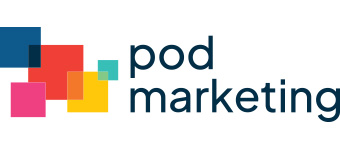Supporting a charity or nonprofit lets you make a meaningful impact on a cause that matters to you—but selecting the right one isn’t easy. To find the right nonprofit or charity to donate to, start by identifying which causes are important to you and develop a research plan.
With so many different organizations dedicated to so many different and important missions, it’s important to approach this process thoughtfully and carefully.
The PODvocate Project works to amplify the efforts of existing charitable organizations that better the lives of others. This is our advice on finding an organization that aligns with your values and passions.
Know What Matters to You
Before jumping into research, define which causes are closest to your heart. Reflect on the issues you’re passionate about, like:
- Hunger relief
- Education
- Environmental conservatio
- Supporting vulnerable populations.
By understanding what matters to you, you can focus your efforts and know where to start your research.
Plan Your Research
Once you identify the cause you want to focus on, plan how you’ll research and identify reputable organizations in that industry.
Start the Selection Process
The first step in researching a charitable or nonprofit organization is to visit its website. The website should provide your:
- Mission
- Vision
- Values
And include information about your:
- Executives
- Board
- Board size
The website should also provide financial and employment statistics, which are typically found in an annual report. To find this information, carefully review the site’s pages, tabs, and sitemap.
Gather more in-depth information about an organization by:
- Contacting them directly
- Making an informal information request
- Making a formal access to information request
Evaluate Charitable Organizations
It’s important to evaluate how effective an organization is before donating—but remember the standards for evaluating a large organization should be different from those for a startup.
With new and rapidly growing organizations, what matters most is their potential and their chances of getting there.
Organizations like GiveWell search for organizations that save or improve lives the most per dollar and list their top charities. GiveWell also provides resources like the Do-It-Yourself Charity Evaluation Questions sheet to guide your analysis of any organization.
Making Your Case to Donors
When approaching this subject from a charity or nonprofit perspective, it’s important to consider how your organization is telling the story of your impact.
By collecting and analyzing data, organizations can show the tangible results of their efforts and how they are making a difference. Before measuring this impact, nonprofits need to establish clear goals and objectives.
After selecting key performance indicators (KPIs), the organization must develop a method to assess whether they have met these goals. This could include a combination of qualitative and quantitative data, such as surveys, interviews, program evaluations, and financial records.
Once the data is collected, analysis through statistical methods, data visualization tools, and nonprofit analytics can help identify trends, patterns, and correlations.
Real-World Examples
charity: water is a nonprofit organization seeking to solve the global water crisis. They have a comprehensive impact reporting process, based off of their “100% Model.” The 100% Model allows charity: water to dedicate 100% of public donations directly to fund clean water projects, as they “treat the clean water projects and operations sides of [their] business differently.”
By counting on separate funds to support their operations, charity: water can ensure transparency and make an impactful case to potential donors.
Movember runs a variety of initiatives aimed at raising awareness, such as the “Dad in Progress” project, which aims to help dads deal with some of the stress they feel by listening to the experiences of other men in a similar situation.
While these initiatives appear effective and well-received based on testimonials they received from listeners, there is potential for even more detailed impact reporting. By including statistics on how many people engage with initiatives like Dad in Progress and estimates of the costs involved, Movember could better evaluate their cost-effectiveness.
For instance, if a podcast costs $20,000 to produce but only reaches 100 listeners, there might be more cost effective ways to achieve their goals. Without knowing the reach of the podcast (number of listeners) and the cost of producing it, it’s difficult to properly assess the results. Transparent impact metrics would help reach donors and convey the positive outcomes they create.
Next Steps
By defining your cause, conducting thorough research, and considering opportunities for small donors, you can help create a positive change.
Still thinking about finding an organization to support? Consider supporting The PODvocate Project, an organization built to lend marketing and other business-related expertise to existing nonprofits and charities.
Our purpose is to elevate other organizations’ efforts, propel them forward, and help them reach their goals in sustainable and unique ways that would otherwise be inaccessible. To learn more about our team or inquire about supporting our initiatives, get in touch with us today.








